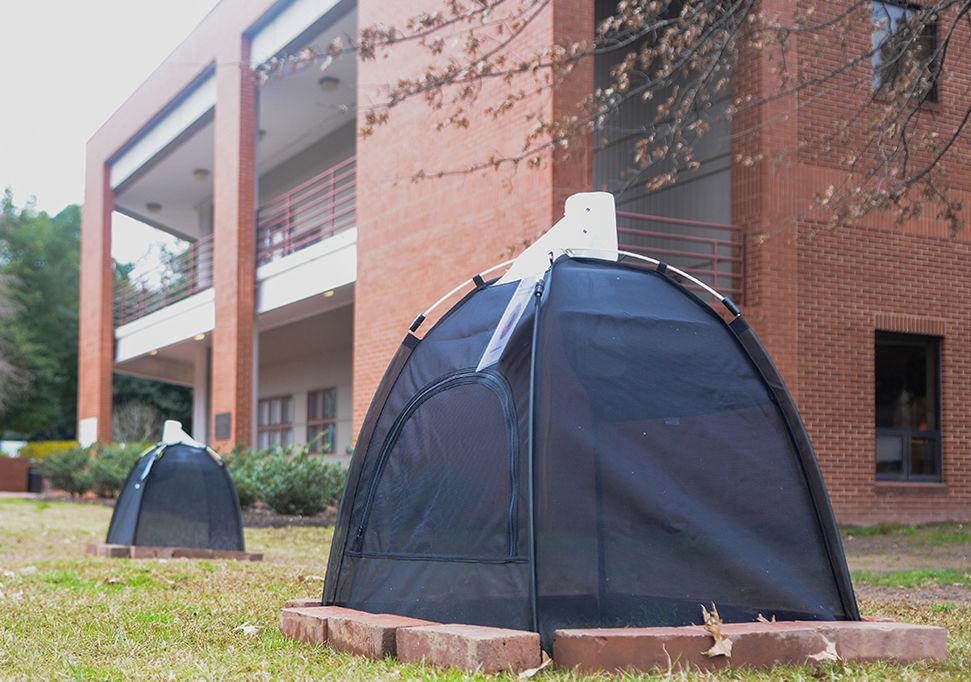Black tents have been appearing around campus as a part of a research project conducted by Kirsten Keleher, a second-year studying fisheries, wildlife and conservation biology. With the help of Elsa Youngsteadt, assistant professor of applied ecology, Keleher is conducting a semester-long research project on what type of soil nesting bees prefer in an urban environment.
“There has been a lot of research around bees, specifically honeybees, and not so much on ground nesting bees in urban environments,” Keleher said. “We want to learn how they nest and their general preferences in an urban environment, like North Carolina State University.”
As a requirement for the honors program and the fisheries, wildlife and conservation biology major, Keheler said she needed to conduct a research experiment. She said there isn’t a lot of research on ground nesting bees in urban environments, despite 80% of bees in the eastern United States practicing nesting. Keleher reached out to Youngsteadt, and they both created a study that further explores this area of interest.
Youngsteadt hopes their results can be used to help maintain habitats for ground nesting bees.
“We get a lot of questions from the public and land managers who are interested in supporting pollinators in their habitat,” Youngsteadt said. “The purpose of this study is to compare mulch, turf and bare dirt as ground covers to see which one is hosting a higher density diversity of bees, and potentially incorporate that into future recommendations for someone who wants to landscape a habitat to be pollinator friendly.”
Keheler says there are 26 tents across nine different locations on campus. They can be found in certain areas, including the Court of North Carolina and near Tucker Hall. The only site that doesn’t have three tents is the one near Witherspoon Student Center, which has two tents covering turf and bare soil, respectively. Youngsteadt said the sites were chosen at random, and it’s unknown if each tent contains a nest for bees.
Youngsteadt said the tents capture the bees. Since the tent is pitch, the bees fly up toward the bottle, as it is made of a lighter color. There, the soapy water in the bottles traps the bees and prevents them from escaping.
Twice a week, Keleher empties the bottles and takes the contents back to the lab. There, she puts the insects through a strainer to remove the moisture from them, pour ethanol on them and put them in a container. Keheler said the insects are categorized by the tent and date they were found.
Keleher said the process of creating and setting up the study was surprisingly easy. After finalizing the research proposal, Youngstead had a meeting with university ground services, which Keleher was unable to attend.
Keheler said university groundskeepers were very supportive of the study and helped set up the tents by layering them with bricks to keep flaps on the tents from opening.
Besides determining which soil ground nesting bees prefer, the study also measures how effective the methodology is at capturing bees. Youngstead said previous studies using the tents did not capture as many bees as the researchers expected.
As of March 3, Keheler hasn’t captured any bees. However, she has captured other insects and bugs like springtails and spiders.








